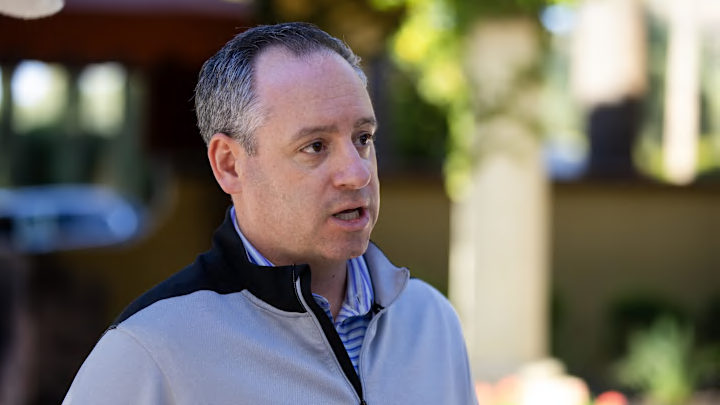The Padres don’t need another front-office fire drill this winter; they need clarity. Oddly enough, they might be getting it from 1,000 miles away. As Colorado’s front office unravels in real time, the Padres’ path through a volatile NL West becomes a little more legible. When an organization hits the reset button at the top, it usually signals two things: a roster evaluation from scratch and a willingness to rethink how value moves. That matters to San Diego. Whether A.J. Preller is shopping for complementary upgrades or just reading the room on his rivals’ timelines, every tremor in Denver reshapes the terrain the Padres will navigate over the next few months.
This week’s tremor was loud. Longtime Rockies executive Zack Rosenthal — vice president of baseball operations and assistant GM — resigned after 21 years with the club, a departure first reported by MLB.com’s Mark Feinsand and detailed by MLB Trade Rumors. Rosenthal had served as assistant GM since the 2014–15 offseason and added the VP title in 2021 when Bill Schmidt moved from interim to full-time GM. His exit arrives barely a week after the Rockies parted ways with Schmidt and announced an external search to lead baseball ops — an unusually outward-facing step for a franchise long criticized for hiring from within.
Padres’ division plot thickens after another rival front-office shakeup
The timing underscores just how dire 2025 was in Denver. The Rockies finished 43–119, tied for the third-worst record in the modern era — and set a modern-era low with a staggering –424 run differential. Their rotation posted a 6.65 ERA, the worst starting-staff mark since 1901. None of that is hyperbole; it’s the statistical wreckage of a season that broke records for all the wrong reasons.
For a Padres club measuring itself against the Dodgers’ machine and the Diamondbacks’ core, it’s hard to ignore that one division rival is essentially starting over while another is consolidating. And when ownership publicly commits to hiring from outside the Rockies’ echo chamber, it hints at a coming philosophical pivot — more data-driven, more transactional, which could reshape how Colorado deals inside the division.
So what does Colorado actually have to build on? Not as much as seven straight losing years would suggest. Even after drafting Ethan Holliday fourth overall and inking him to a record high-school bonus, industry rankings still place the Rockies’ farm in the low-20s — closer to “needs depth” than “overnight fix.” Holliday is a legitimate headliner, but the broader pipeline lags behind the division’s best. That reality complicates any quick rebound and increases the odds that Colorado’s new leadership uses 2026 to audit, develop, and sell at the margins rather than chase splashy wins that don’t fit their window.
From a Padres vantage point, upheaval in Denver can cut both ways. In the short term, instability often equals opportunity: clubs in transition will listen on arbitrage trades (think controllable relievers or depth bats) and may be more open to creative financial structures while they reset. Longer term, an analytically aligned Rockies regime could become a tougher negotiating partner inside the NL West, and that’s a note worth underlining as San Diego plots its 40-man churn, Rule 5 protection choices, and how aggressively to shop prospects for MLB help.
The Dodgers aren’t slowing down; the Giants are retooling with intent; and the Rockies’ vacancy at the top introduces a wild card. For the Padres, understanding when a rival is vulnerable versus when it’s about to get smarter is part of winning the winter before you try to win the West.
In other words: San Diego has its own homework — rotation fortification, catching clarity, bench thump, but it also has a clearer read on a neighbor stuck at mile zero. If Colorado truly brings in an outsider and modernizes, the Rockies could be a different kind of problem in two years. Until then, the Padres should treat this as a small strategic tailwind in a division that rarely offers any. The NL West didn’t get easier overnight, but it did get more predictable on one front, and in October planning season, that’s an edge.
